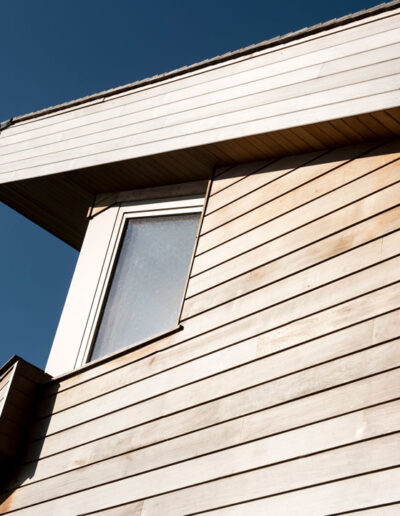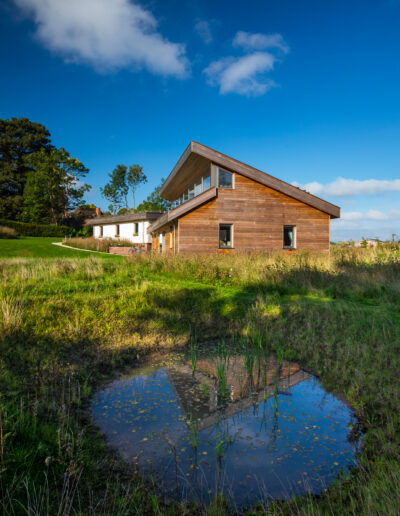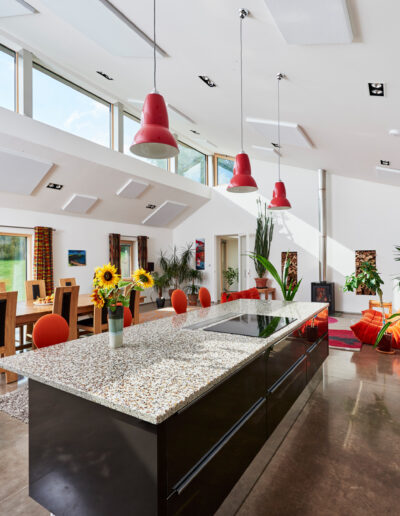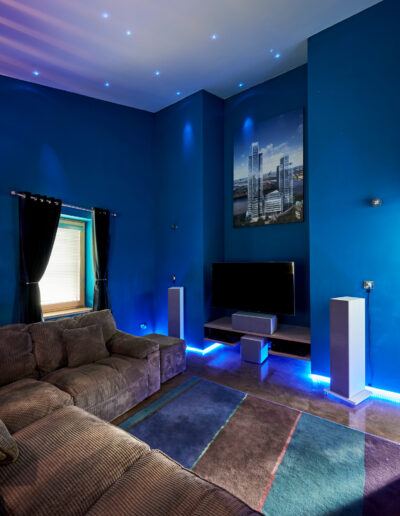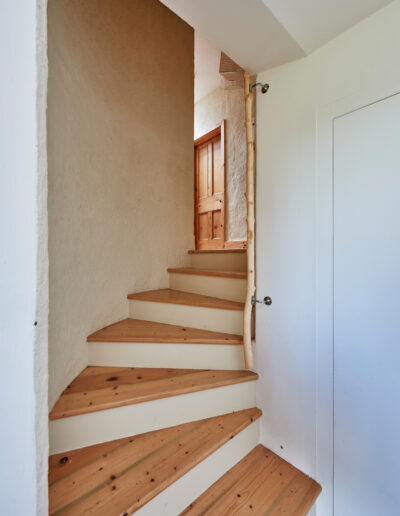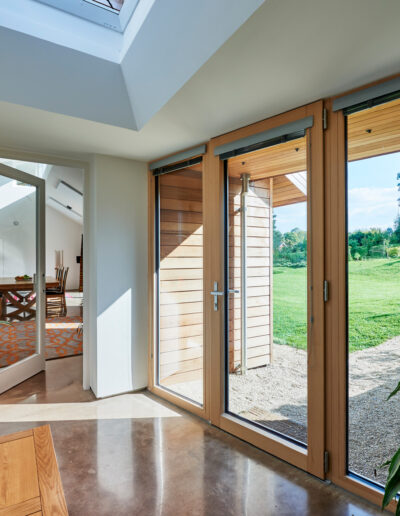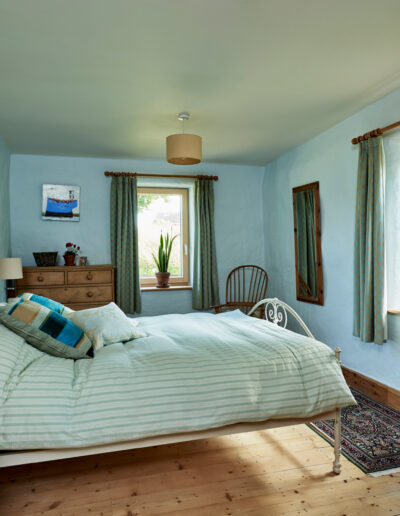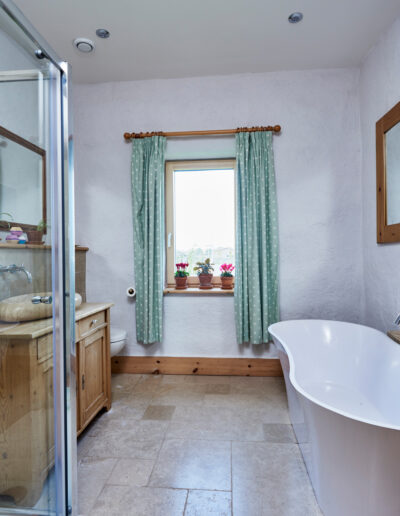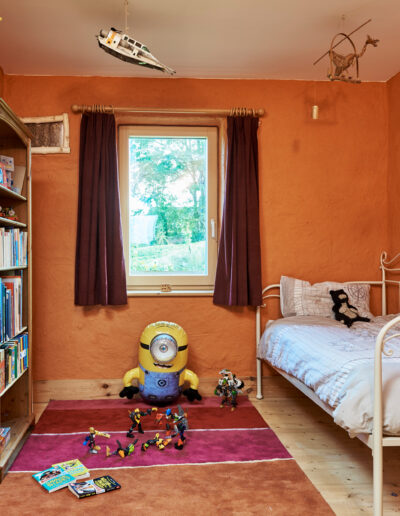The house is a single storey dwelling designed and built by Andy Baylis for a minimal use of energy and impact on the environment. Where possible natural building materials have been chosen with exposed elements designed for good durability. The house plot is set within the Green Network and the Battenhall Conservation Area and, as such, a number of ecological enhancement measures have been used in the design of the house external elements and wild garden.
The living pavilion is orientated due south and is approximately 40% glazed to the south elevation to encourage passive solar gain. The roof overhangs the glazing and internal blinds are used to control the heat gain in the summer. The roof is pitched at 30º to the south to give PV and solar thermal panels the ideal angle to the sun. At high level a south facing celestial window introduces good levels of daylight into the building as well as passive solar gain in the winter. The roof slopes down to the north and harvest rain into an underground harvesting tank. This water is used for watering the garden, flushing toilets and washing clothes. The roof material is cedar shingles, chosen to blend into the natural setting. The walls are clad with a FSC rated red cedar; a softwood chosen for its natural resistance to insect and fungal attack. The living pavilion houses the kitchen, dining area, lounge area and the home office.
The bedroom and bathroom wing is set up seven steps from the rest of the house to marry in with the natural slope of the site. This reduced the requirement to excavate into the ground and restricts the imposition of the building onto its natural environment. The walls are in-filled from locally sourced straw bales and rendered with a lime render. The roof is topped with a green roof of a range of short and tall flowering sedum species. This form of construction minimises the embodied energy within the structure and virtually all of the materials are compostable or recyclable. The green roof and lime plaster keeps the building airtight and cool in the summer and it is warm in the winter due to the excellent insulating properties of the straw. In order to introduce daylight into the central corridor a roof light is set into the centre of the corridor. The floor is covered in timber boards.
The central hub houses the entrance lobby to the building and the utility/plant area. This has a green roof and be clad with the same timber as the living pavilion. The WC is a separating, composting toilet that allows the waste to be composted and reused in the garden. A roof light is located above the entrance hall to introduce natural light into the space.
The whole building supported by a FSC rated timber frame. The windows are triple or quadruple glazed in order to minimise heat losses from the building and they have good security credentials. Insulation where needed in the walls and ceilings are sheep’s wool to reduce the introduction of toxic and high embodied energy products. Lighting is all specified as low energy and LED bulbs are used extensively through the building. Externally low energy light fittings are used to provide secure access to the property.
In winter only minimal heating is required. A log burning boiler stove is used to introduce some space heating and heat into the hot water accumulator tank. Because of the air tightness of the building a mechanical ventilation heat recovery unit is used to bring fresh air into the building. A hot water battery connected to the MVHR unit helps distribute heat around the building at times of cold external temperatures.
“The saying goes that if you’re going to do something, do it right. This was certainly applied when Andy Baylis and his partner Rachael Alexander decided to build their energy-efficient home on the outskirts of Worcester, with an ambition of being self-sufficient and zero carbon.”
— Daisy Jeffery
Homebuilding and Renovating Magazine 2016

